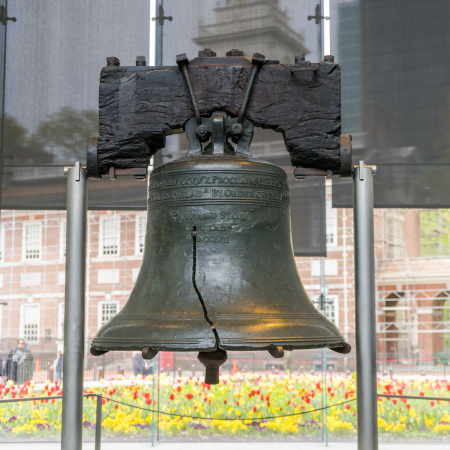Tag: history
The global launch industry in 2025: The real space race is between SpaceX and China
In 2025 the worldwide revolution in rocketry that began about a decade ago continued. Across the globe new private commercial rocket companies are forming, not just in the United States. And across the globe, the three-quarters-of-a century domination by government space agencies is receding, though those agencies are right now pushing back with all their might to protect their turf.
Dominating this revolution in 2025 in every way possible however were two entities, one a private American company and the second a communist nation attempting to imitate capitalism. The former is SpaceX, accomplishing more in this single year than whole nations and even the whole globe had managed in any year since the launch of Sputnik. The latter is China, which in 2025 became a true space power, its achievements matching and even exceeding anything done by either the U.S. or the Soviet Union for most of the space age.
» Read more
Archeologists find what they think is evidence of fire-making by early Neanderthals
Archeologists have found a Neanderthal campsite from 400,000 years ago that shows strong evidence of the ability to make fire.
The researchers found two fragments of pyrite, a mineral that can produce sparks when struck against flint, indicating that the early Neanderthals used them as “a fire-making kit.” These ancient deposits mark the earliest known evidence of fire-making, roughly 400,000 years ago.
…The Barnham site lies in a disused clay pit in Suffolk, UK, preserving traces of the period around 427,000 to 415,000 years ago. In this area, the team found a small patch of reddened sediment, about the size of a modest campfire, surrounded by two pyrites, 19 flints, and four broken hand axes, showing clear signs of heating. Pyrites are rare locally, and the early Neanderthals likely carried them in from elsewhere.
Previously, the earliest known evidence of the ability to make fire had been dated from 50,000 years ago, and was done by homo sapiens, not Neanderthals.
Analysis of the sediment said the heat there matched that of a campfire, not a wildfire. The data also said the spot had been used repeatedly.
This one campsite suggests Neanderthals in general had the knowledge and tools to make fire, but it also could simply show the work of one particularly smart Neanderthal.
Archeologists have found a Neanderthal campsite from 400,000 years ago that shows strong evidence of the ability to make fire.
The researchers found two fragments of pyrite, a mineral that can produce sparks when struck against flint, indicating that the early Neanderthals used them as “a fire-making kit.” These ancient deposits mark the earliest known evidence of fire-making, roughly 400,000 years ago.
…The Barnham site lies in a disused clay pit in Suffolk, UK, preserving traces of the period around 427,000 to 415,000 years ago. In this area, the team found a small patch of reddened sediment, about the size of a modest campfire, surrounded by two pyrites, 19 flints, and four broken hand axes, showing clear signs of heating. Pyrites are rare locally, and the early Neanderthals likely carried them in from elsewhere.
Previously, the earliest known evidence of the ability to make fire had been dated from 50,000 years ago, and was done by homo sapiens, not Neanderthals.
Analysis of the sediment said the heat there matched that of a campfire, not a wildfire. The data also said the spot had been used repeatedly.
This one campsite suggests Neanderthals in general had the knowledge and tools to make fire, but it also could simply show the work of one particularly smart Neanderthal.
Hanna-Barbera – Good Will To Men
A morning pause: Apropos of my essay earlier this week on the need for more good will between everyone, here’s a Christmas cartoon from 1955, made by a generation still close to World War II and trapped in the Cold War.
A morning pause: Apropos of my essay earlier this week on the need for more good will between everyone, here’s a Christmas cartoon from 1955, made by a generation still close to World War II and trapped in the Cold War.
Trans-Siberian Orchestra – Christmas Eve/Sarajevo
An evening pause: I posted this Judd Clark suggestion previously in December 2023, but Judd sent it to me again and I agree, it deserves a reprise. It reminds us that despite all the craziness that has happened in the world in the past half century, children still see wonderful things we have forgotten exist.
The war-mongers are always those in power
After Diane and I recently watched Mel Gibson’s movie Braveheart I was intrigued to find out the real history behind William Wallace and the war between Scotland and England in the 1200-1300s. Fortunately, I stumbled upon Ronald McNair Scott’s excellent 1982 history, Robert the Bruce, King of Scots.
Not surprisingly, I learned that William Wallace played a relatively minor role in the effort of the Scots to break free from English rule than implied by the movie. The movie was reasonably accurate overall, but the real leader of that long battle was Robert the Bruce, who was descended from previous rulers and fought a long guerilla war against multiple English kings over more than three decades to establish his nation’s independence and his right to rule as king.
That fight began after the death of Scotland’s previous king, Alexander III in 1286. Alexander had for years maintained a peaceful alliance with England, as two separate nations. The problem was that when he died, his heir was still a child. His regents signed a deal with the English king, Edward I, allowing them to rule an independent Scotland as allies with England, but Edward soon realized the power vacuum in Scotland provided him an opportunity. He repudiated the treaty and began a long violent effort to conquer these northern provinces.
The result was thirty years of endless war, ravaging the countryside both in Scotland and northern England. Eventually Robert the Bruce won, getting England to acknowledge the independence of Scotland. Thus Bruce in many ways is seen as Scotland’s own version of George Washington.
What struck me as I read this book however was the plunder and devastation this long war visited upon the ordinary people in both England and Scotland. Edward would invade Scotland, wrecking havoc on local villages and castles. Bruce would respond with repeated raids into northern England, where he would destroy villages and farms, leaving the surviving inhabitants to starve.
And what was the war about?
» Read more
Little Cars – When Sweden Switched To Driving On The Right
Buffalo Bill: The greatest true boy adventure story that’s never been told

In American popular culture, Buffalo Bill is an icon whose history we all think we know, a western showman who in the latter decades of the 19th century traveled the world with his Wild West show, enchanting heads of states as well as ordinary people with the romantic fantasy of the American west, made up of wagon trains, gunfighters, Indian attacks, and last-minute cavalry rescues.
His name inspired the name of a professional football team. His Wild West show inspired at least one musical and numerous Hollywood movies and television shows.
Yet do we really know who the man was?
I discovered recently that we do not. Our culture knows nothing about the man, whose real name was William Cody. Worse, its cartoon vision of him denigrates his unique American nature. He was not only the greatest scout the U.S. Army ever saw, his knowledge of American Indian made it possible for him to not only help make peace with those Indians who wanted it, it also helped the U.S. put down those Indians willing only to wage terrorist war. And when he shifted into the entertainment world, his show provided employment for both his many cowboy friends as well as for many of those same Indians, both friends and former enemies.
And most astonishing of all, I discovered that Buffalo Bill’s childhood was one of the most amazing boy adventure tales, far more exciting than any kid’s movie made in the last hundred years. That Hollywood has never made a movie of his youth now baffles me. It is the stuff that Hollywood craves, but more significantly, it appears it actually happened!
I discovered these facts in reading Don Russell’s wonderful biography of Bill Cody, The Lives and Legends of Buffalo Bill, published by the University of Oklahoma in 1979. Russell’s focus was to dig into the original source material in order to separate the fact from the fiction, since much of Cody’s life had been exaggerated by himself and others during his showman days, and then overblown and warped by Hollywood’s later interpretations.
In this Russell succeeds brilliantly. He describes what we know in vivid language, but also outlines what we don’t know or can’t trust about each story. In the end he describes a unique man with unique talents who always tried to do the right thing, even in difficult circumstances. In every sense Cody’s life was the epitome of an American western pioneer cowboy, pushing the unknown with courage and pluck.
But to me the most amazing part of Russell’s biography was its first few chapters, when Russell describes Cody’s childhood. The boy’s father, Isaac Cody, was a pioneer in his own right, taking his family farther and farther west until they ended up in Kansas and involved in the violent politics there preceding the Civil War. When Isaac died in 1857, he left behind a widow and three young children, who then had to find a way to survive in that difficult pioneer world.
And so, at the age of eleven Billy Cody went out to find work. And the work the boy found was truly astonishing, when compared to what we expect from kids his age today.
» Read more
Thanksgiving repost: Miracle on 34th Street
An evening pause: This was posted in 2023. Time to repost.
Original text:
—————————
This movie used to be a tradition for television on Thanksgiving. At that time the holiday was well linked with the then joyous and relatively Christian Macy’s Day Parade (now warped into a queer agenda demonstration). [Editor: an agenda that thank god appears to be on the run.]
I think it makes for a good opening to the holiday season.
Josephine Baker – Dance Josie, Dance
A Midnight Repost: Farewell to America
I wrote the essay below the day before the November 2024 election, when it remained very uncertain whether it would be Donald Trump or Kamala Harris as our next president.
The essay itself did not get picked up at very many news aggregates. Nor did it garner as much traffic as would be expected, based on the aggregates that did pick it up. I believe the reason was the depressing title.
No matter, the point I made then still holds. The fundamental American culture — based on freedom, family, and the Judeo-Christian values of Western Civilization — that made this the most prosperous place ever created by humankind in its entire history no longer exists.
What will come remains unknown. We might see a resurgence of that culture, especially based on the public’s response following the murder of Charlie Kirk. Then again, we might not. As I said in the very first line of my history, Leaving Earth, societies change.
I repost this essay now, during Thanksgiving week, because I strongly believe it essential that we understand exactly where we stand, in order to make it possible for us to move forward, in the right direction. The essay is also another example of my never-ending and too often successful effort to look farther into the future than others. I think a year later this essay stands up quite well in this sense.
———————————–
Farewell to America

“Proclaim liberty throughout all the land unto all
the inhabitants thereof.” Photo credit: William Zhang
Despite my headline, this essay is not intended to be entirely pessimistic. Instead it is my effort to accept a reality that I think few people, including myself, have generally been able to process: The country we shall see after tomorrow’s election will not be the America as founded in 1776 and continued to prosper for the next quarter millennium.
The country can certainly be made great again. Elon Musk’s SpaceX proves it, time after time. The talent and creativity of free Americans is truly endless, and if Donald Trump wins it is very likely that energy will be unleashed again, in ways that no one can predict.
The country can certainly become free again. There is no law that prevents the elimination of bureaucracy and regulation, no matter how immortal government agencies appear to be. The fall of the Soviet Union in 1991 proves this. Though Russia has sadly retreated back to its top-down government-ruling ways, the country did wipe out almost all its bureaucracy in 1991, resulting in an exuberant restart that even today is nowhere near as oppressive as Soviet rule.
Should Donald Trump win, we should have every expectation that he will do the largest house-cleaning of the federal government ever. The benefits will be immeasurable, and magnificent.
What however will not change, even if Donald Trump wins resoundingly tomorrow, is the modern culture and political ethics that now exist. That modern culture is fundamentally different than the America that existed during the country’ s first 200 years, and it guarantees that America can never be the country it once was.
» Read more
Who was Cornelius Vanderbilt?
I ask the question in my headline because I am quite sure it is a question most Americans can no longer answer, with any firm knowledge. I myself didn’t know who Vanderbilt really was until I read a wonderful biography of him, The First Tycoon: The epic life of Cornelius Vanderbilt by T.J. Stiles, about two months ago.
Beforehand, all I really knew about Vanderbilt was that he had been a big deal somehow in the 1800s, and as a result there was a statue of him on the south side of Grand Central Station in New York, visible only by drivers going past on the overpass that circles the station.
What I learned from Stiles book however was astonishing. Not only did Vanderbilt build Grand Central Station, it was part of a transportation empire he created that by the end of his life covered most of the eastern United States. For Americans in the 1800s, if you needed to get from one place to another, you almost certainly rode on a Vanderbilt steamship or railroad.
Even more interesting to me however were the remarkable similarities in style, approach, and success between the Cornelius Vanderbilt of the 1800s and the Elon Musk of the 2000s. Both focused on taking new technology and making it profitable. Both built their empires on transportation.
And most of all, both focused on the product they were building to make money, not on speculating its value to make a quick buck.
» Read more
Restless Viking – The Great Lakes Flight of MSgt William Wyman
An evening pause: A great though tragic story that deserves telling.
Have a great weekend!
Hat tip Wayne DeVette.
The crippling effect of “woke” on historians
As a historian who likes to read (from real books that I can pick up and feel, not digital versions that make true understanding and absorption difficult), I am routinely reading at least two histories about America’s past at any one time.
For example, I previously had read two great biographies of T.E. Lawrence (of Lawrence of Arabia fame) and Cornelius Vanderbilt (who dominated the American transportation industry in the first half of the 1800s). More about each in future essays, as I think I will start reviewing these books as I finish them.

Believe it or not, this is actually an amazingly
accurate rendering of the first Thanksgiving
Today’s essay however is about two books I finished yesterday, both about two very different periods in American history. Both however had the exact same flaws, typical of the early 2000s when they were written, despite being very detailed and accurate efforts. The books:
- Mayflower: a story of courage, community, and war, by Nathaniel Philbrick
- Flyboys: a true story of courage, by James Bradley
The first was published in 2006, and was an attempt to describe in detail the story behind the settlement of Pilgrims in New England in first half century after they arrived in 1620.
The second was published in 2003, and was an attempt to tell the story of the defeat of Japan in World War II, achieved mostly because of the advent of the airplane in reshaping warfare. While ground troops took island after island in the Pacific, in the end it was the air war against Japan itself that eventually forced its surrender. Bradley focuses on telling us the story of the pilots and crews in that air war.
As I already noted, both books do excellent jobs detailing very accurately in vivid terms the events involved. For anyone who wishes to learn something about these significant events of our nation’s history, I recommend them highly.
However, that recommendation comes with one major caveat. In both cases, the authors were handicapped by certain modern academic paradigms that crippled their ability to see the larger context of events. Those paradigms demanded that both historians treat all the cultures involved as morally equivalent, and because of this both writers miss entirely the greater moral fundamentals that moved the Western side of both stories.
For example, let’s take Philbrick’s fascinating history of the Pilgrims.
» Read more
Historical proof that today’s public schools are nothing but indoctrination mills poisoning minds
You want to know why today’s kids know nothing about America’s past, and in fact in many cases actually believe falsely that America invented slavery and has always been an evil oppressive nation founded on that even more evil concept of capitalism, you need only compare pictures of two typical public school classrooms, one from 1909 and one from 2025.
The picture to the right was taken in 1909, showing an elementary classroom in the Washington, DC area. Note the picture of President Teddy Roosevelt on the wall, surrounded by American flags. Note the blackboard that covers two entire walls, its entire face filled with detailed information these children were expected to learn. Note how there is nothing else. Very clearly the focus is on learning the basics of reading, writing, and arithmetic, with a lot of American history and science thrown in as well. As noted in the article of many such vintage classroom images from which this picture was drawn:
Students wear their best clothes for this formal photograph. The classroom features standard educational decor of the period—portraits of historical figures, maps, and instructional charts. Such photographs documented not just the students but the educational standards and resources of local communities.
As a child who grew up in the 1950s and 1960s, I can say that the classrooms of my day were quite similar. There was almost always a portrait of George Washington and the Declaration of Independence on the wall, along with map of the world and the U.S. And above all, the focus was on learning basic facts and essential skills.
The next picture below was taken in 2025 by a parent of an 11-year-old boy while attending a parent orientation night. It is also typical of the classrooms one sees nowadays in the public schools, and the contrast is more than striking.
» Read more
Alexis Dahl – How to ship 800 billion pounds of rock fast
Michael Knowles – Celebrating Columbus
A mid-day pause: I posted twice in the past, but think it should be seen again. As I wrote in 2021,
On this day when all should be celebrating Christopher Columbus and his willingness “sail beyond the sunset,” to use a phrase from Tennyson, this short video give us an accurate picture of the man, his times, and his achievements. It also puts the lie to the bigoted, hateful, leftist slanders that have been used in recent years to poison his legacy.
A mid-day pause: I posted twice in the past, but think it should be seen again. As I wrote in 2021,
On this day when all should be celebrating Christopher Columbus and his willingness “sail beyond the sunset,” to use a phrase from Tennyson, this short video give us an accurate picture of the man, his times, and his achievements. It also puts the lie to the bigoted, hateful, leftist slanders that have been used in recent years to poison his legacy.
Business Insider – The Rise And Fall Of The American Diner
An evening pause: This remains the place that Americans go to after church.
Enjoy the weekend. And find a great diner to eat at!
Hat tip Cotour.
Dennis James – Mozart’s Adagio for Glass Harmonica
An evening pause: Performed live 2017. And yes, that is a real instrument, using “a series of glass bowls or goblets graduated in size to produce musical tones by means of friction.” What is even more interesting is that it was invented by Benjamin Franklin in 1761.
Hat tip Judd Clark.
An evening pause: Performed live 2017. And yes, that is a real instrument, using “a series of glass bowls or goblets graduated in size to produce musical tones by means of friction.” What is even more interesting is that it was invented by Benjamin Franklin in 1761.
Hat tip Judd Clark.
Saturday Night Live – Washington’s Dream
Primal Space – The water system of the ancient city of Granada
Munich Bach Orchestra – Brandenburg Concerto No 2 in F major,3rd movement
An evening pause: For those old enough, you will recognize this music, as it was the theme music for the William Buckley’s show, Firing Line, from the 60s and 70s.
Hat tip Wayne DeVette.
Jay Leno’s Garage – 1965 Shelby 427 Cobra Competition
An evening pause: For car buffs, and anyone else who wants to take a drive this weekend.
Hat tip Cotour.
Jim Lovell, the world’s first space cadet, passes away at 97

Jim and Marilyn Lovell aboard the
U.S. Navy sailboat Freedom in 1950
Today we learned the sad news of the passing of Jim Lovell, the last of the three Apollo 8 astronauts as well as a veteran of two Gemini missions and the ill-fated Apollo 13 mission. Lovell was 97.
In a statement released Friday, the Lovell family highlighted his “amazing life and career accomplishments” and his “legendary leadership in pioneering human space flight.”
“But, to all of us, he was Dad, Granddad, and the Leader of our family. Most importantly, he was our Hero,” the family said in its statement. “We will miss his unshakeable optimism, his sense of humor, and the way he made each of us feel we could do the impossible. He was truly one of a kind.”
“One of a kind” is an understatement. » Read more
Confusion reigns as to what shuttle will be moved to Houston, if any
Despite amendments in the reconciliation bill that said the space shuttle Discovery held by the Smithsonian in DC would be transferred to Houston for display, it appears there is uncertainty and confusion as to what shuttle will be moved, above and beyond the Smithsonian’s opposition to this transfer.
The legislation that required Duffy to choose a “space vehicle” that had “flown in space” and “carried people” did not specify an orbiter by name, but the language in the “One Big Beautiful Bill” that President Donald Trump signed into law last month was inspired by Cornyn and fellow Texas Senator Ted Cruz’s bill to relocate Discovery. “The acting Administrator has made an identification. We have no further public statement at this time,” said a spokesperson for Duffy in response to an inquiry by collectSPACE.
It appears Duffy’s options are limited. NASA no longer has any title or ownership rights to the shuttles held by the Smithsonian and the California Science Center in Los Angeles. It owns the only remaining shuttle, Atlantis, which it has on display in Florida, but moving that to Houston would entail big political warfare.
Despite amendments in the reconciliation bill that said the space shuttle Discovery held by the Smithsonian in DC would be transferred to Houston for display, it appears there is uncertainty and confusion as to what shuttle will be moved, above and beyond the Smithsonian’s opposition to this transfer.
The legislation that required Duffy to choose a “space vehicle” that had “flown in space” and “carried people” did not specify an orbiter by name, but the language in the “One Big Beautiful Bill” that President Donald Trump signed into law last month was inspired by Cornyn and fellow Texas Senator Ted Cruz’s bill to relocate Discovery. “The acting Administrator has made an identification. We have no further public statement at this time,” said a spokesperson for Duffy in response to an inquiry by collectSPACE.
It appears Duffy’s options are limited. NASA no longer has any title or ownership rights to the shuttles held by the Smithsonian and the California Science Center in Los Angeles. It owns the only remaining shuttle, Atlantis, which it has on display in Florida, but moving that to Houston would entail big political warfare.
Smithsonian opposes order to transfer space shuttle Discovery to Houston
The recent passed reconciliation bill included a provision ordering the Smithsonian Air and Space Museum to transfer the space shuttle Discovery back to NASA so that it could be shipped to Houston for display, budgeting $85 million for the task.
The Smithsonian however is now opposing that provision, claiming Congress and the President had no authority to do so as it owns Discovery and had not agreed to the transfer.
In a formal response, the Smithsonian Institution says it owns Discovery, which, like the rest of its collection, is held in trust for the American public. The Smithsonian asserts that NASA transferred “all rights, title, interest and ownership” of the shuttle to the Institution in 2012, and that it is “part of the National Air and Space Museum’s mission and core function as a research facility and the repository of the national air and space collection.”
It does appear the Smithsonian might have a case, based on past precedent and the laws that established the institution as an independent entity. At the same time, Congress provides two-thirds of its funding, which surely gives Congress a say in its actions. Moreover, recent court rulings have generally ruled against such independent institutions, ruling that the Constitution does not allow Congress to cede either its authority or the President’s in such cases.
So, even if the Smithsonian should win in court, its funding could be threatened if it defies Congress. It will be entertaining to watch this kerfuffle play out.
The recent passed reconciliation bill included a provision ordering the Smithsonian Air and Space Museum to transfer the space shuttle Discovery back to NASA so that it could be shipped to Houston for display, budgeting $85 million for the task.
The Smithsonian however is now opposing that provision, claiming Congress and the President had no authority to do so as it owns Discovery and had not agreed to the transfer.
In a formal response, the Smithsonian Institution says it owns Discovery, which, like the rest of its collection, is held in trust for the American public. The Smithsonian asserts that NASA transferred “all rights, title, interest and ownership” of the shuttle to the Institution in 2012, and that it is “part of the National Air and Space Museum’s mission and core function as a research facility and the repository of the national air and space collection.”
It does appear the Smithsonian might have a case, based on past precedent and the laws that established the institution as an independent entity. At the same time, Congress provides two-thirds of its funding, which surely gives Congress a say in its actions. Moreover, recent court rulings have generally ruled against such independent institutions, ruling that the Constitution does not allow Congress to cede either its authority or the President’s in such cases.
So, even if the Smithsonian should win in court, its funding could be threatened if it defies Congress. It will be entertaining to watch this kerfuffle play out.
American Battlefield Trust – Famous Civil War Photos in 360°
An evening pause: I just finished reading a book of letters written by a soldier who participated in the battle of Antietam, just south of Burnside Bridge. The irony was that Burnside spent more than a day and multiple attempts to capture the bridge, when in fact his troops could have simply walked across the creek at any point, never getting their legs wet above the knee. The soldier was Captain Wolcott Pascal Marsh, and his regiment actually forded the creek further south and advanced farther than almost anyone else in Burnside’s battalion. The book: Letters to a Civil War Bride.
Like all the Civil War battle fields, Antietam is definitely worth visiting.
Hat tip Cotour.
James Cox – The Silver Swan
An evening pause: From the Bowes Museum in northern England, east of the Lake District.
Hat tip Cotour.
Primal Space – The Underground Clocks of Paris
An evening pause: Some fascinating technology history, worth fast forwarding through the annoying commercial in the middle.
Hat tip Willi Kusche.
1776 – Hatching an Egg
A evening pause: It is July 4th, a time to celebrate not only the Declaration of Independence but the geniuses who created it. This wonderful song from the 1976 movie version of the 1972 musical, 1776 does it so perfectly. I posted it several times before, but it bears repeating because, as I said in those earlier Independence Day posts, “not only did the musical capture the essence of the men who made independency happen, it is also a rollicking and entertaining work of art.”
And as I have also said previously, “Despite the hate being spewed against America and its founding principle that all humans are created free with the right to life, liberty, and the pursuit of happiness, that truth still shines. As John Kennedy said of himself, ourselves, and these founding fathers. ‘We stand for freedom.'”
I pray that most Americans still agree, and are willing to fight with me the growing mobs across our land who no longer do.



